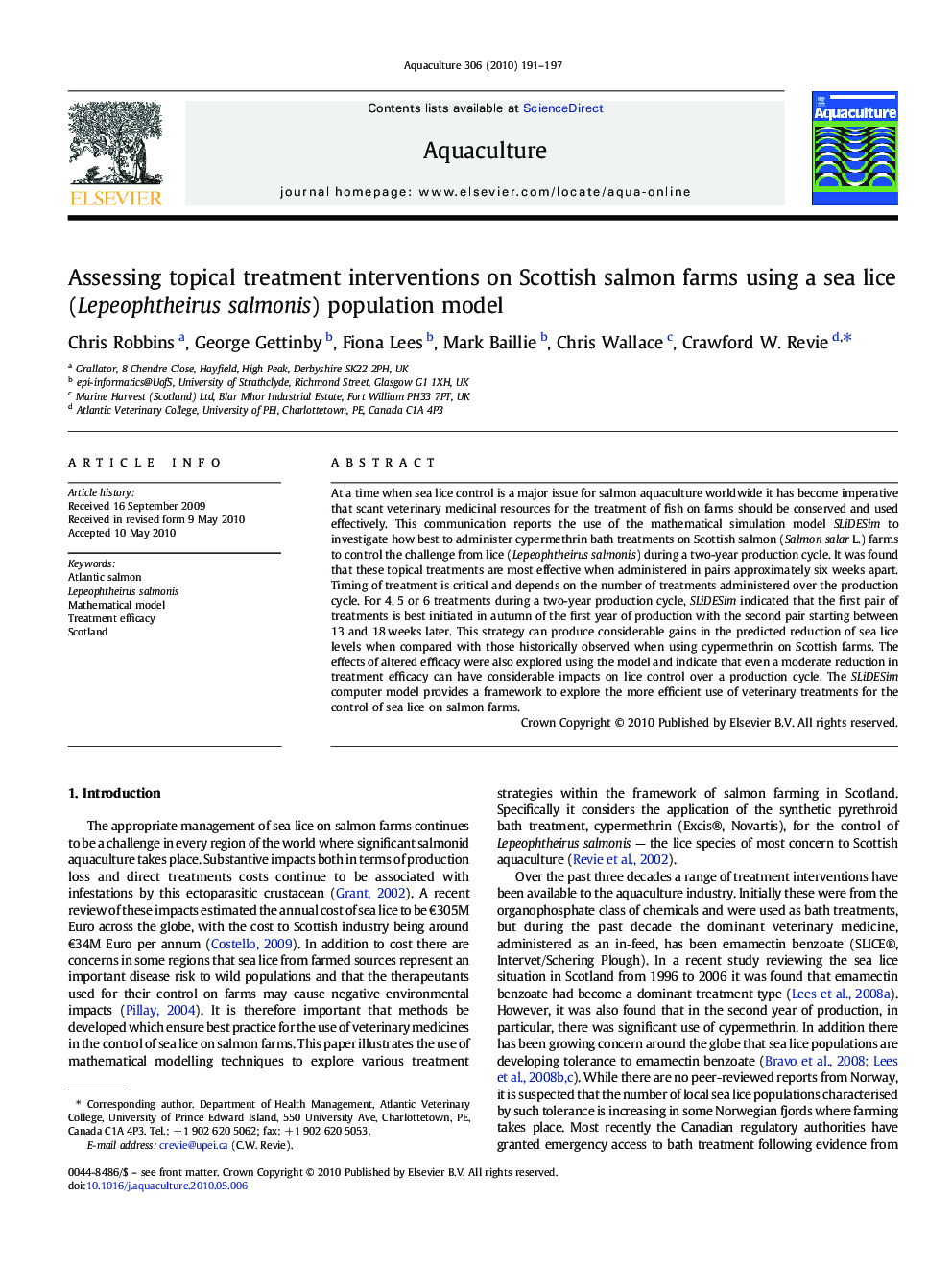| Article ID | Journal | Published Year | Pages | File Type |
|---|---|---|---|---|
| 2423599 | Aquaculture | 2010 | 7 Pages |
At a time when sea lice control is a major issue for salmon aquaculture worldwide it has become imperative that scant veterinary medicinal resources for the treatment of fish on farms should be conserved and used effectively. This communication reports the use of the mathematical simulation model SLiDESim to investigate how best to administer cypermethrin bath treatments on Scottish salmon (Salmon salar L.) farms to control the challenge from lice (Lepeophtheirus salmonis) during a two-year production cycle. It was found that these topical treatments are most effective when administered in pairs approximately six weeks apart. Timing of treatment is critical and depends on the number of treatments administered over the production cycle. For 4, 5 or 6 treatments during a two-year production cycle, SLiDESim indicated that the first pair of treatments is best initiated in autumn of the first year of production with the second pair starting between 13 and 18 weeks later. This strategy can produce considerable gains in the predicted reduction of sea lice levels when compared with those historically observed when using cypermethrin on Scottish farms. The effects of altered efficacy were also explored using the model and indicate that even a moderate reduction in treatment efficacy can have considerable impacts on lice control over a production cycle. The SLiDESim computer model provides a framework to explore the more efficient use of veterinary treatments for the control of sea lice on salmon farms.
